Top Forex Brokers that Allow Hedging for 2026
We found 11 online brokers that are appropriate for Trading Hedging.
Best Hedging Brokers Guide
Analysis by Andrew Blumer, Updated Last updated – December 17, 2025
Hedging Brokers
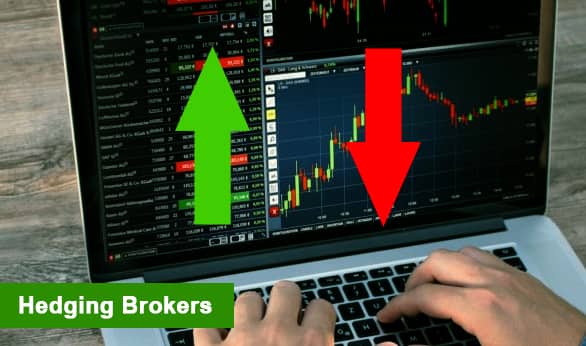
As a trader, I’ve always considered hedging an essential risk management tool, especially in volatile markets. I’ve found that brokers who allow hedging provide me with a crucial safety net, helping to mitigate risk and limit potential losses caused by unexpected price swings. For example, in one of my trades, I held a long position in a stock and purchased put options to hedge against a potential decline. Although this strategy didn’t eliminate all risks, it helped me protect my capital.
Because I’ve experienced firsthand how effective hedging can be at reducing downside risk, I often seek out hedging brokers that offer greater flexibility in managing my portfolio. However, I’m also aware that hedging comes with tradeoffs it can sometimes lower my potential profits and, in some cases, increase my trading costs.
I understand that hedging is a complex strategy and can carry a high risk of financial loss. I always make sure to fully understand its mechanics and associated risks before incorporating it into my trading approach.
Best Hedging Brokers
Choosing the right broker is essential for effective hedging. While the brokers listed here offer features that support hedging strategies, traders should conduct their own research before selecting one.
IC Markets
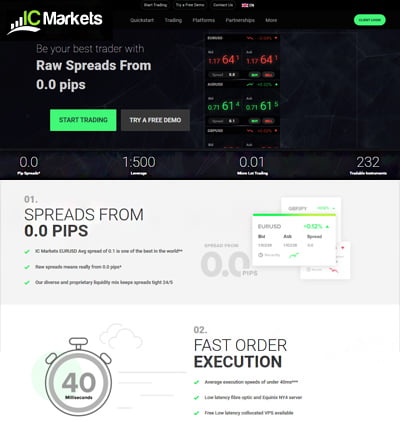
IC Markets is a top choice for traders who rely on fast execution and tight spreads, making it ideal for hedging strategies. With support for MT4, MT5, and cTrader, traders can implement automated hedging with low latency. The availability of free low-latency VPS further enhances its suitability for hedging by ensuring minimal execution delays.
RoboForex

RoboForex provides high leverage and competitive spreads, making it an attractive option for traders implementing hedging strategies. With MT4 and MT5 compatibility, traders can efficiently manage risk while leveraging automated tools for precise execution.
eToro

eToro’s social trading feature allows traders to follow and copy strategies from experienced investors, making it a valuable tool for those looking to hedge effectively. By mirroring seasoned traders, beginners can incorporate risk management techniques while diversifying their positions.
XTB
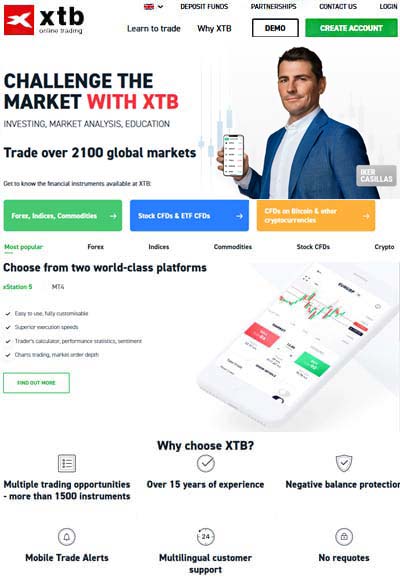
XTB offers in-depth market analysis and research tools, helping traders make informed decisions when hedging. Its educational resources and strong regulatory framework make it a reliable choice for traders focused on minimizing risk.
XM
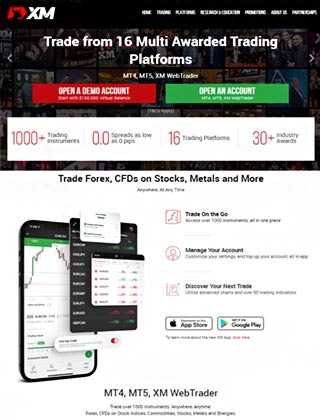
XM provides multiple account types and diverse asset offerings, making it adaptable for various hedging strategies. Strong regulatory oversight and comprehensive risk management tools enhance its appeal for traders looking to safeguard their portfolios.
Pepperstone
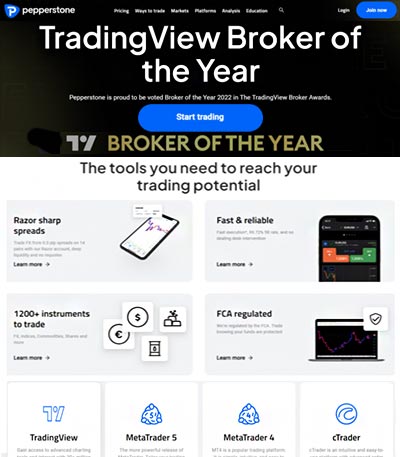
Pepperstone is favored for its fast execution speeds and tight spreads, essential for effective hedging. Its strong regulatory framework provides a secure environment, ensuring traders can hedge efficiently without unnecessary risks.
AvaTrade
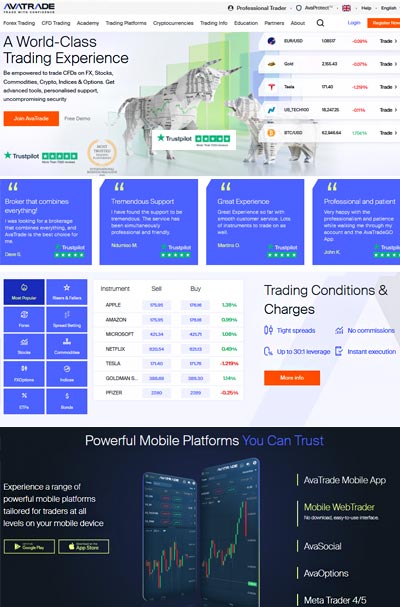
AvaTrade’s social trading and commission-free structure make it well-suited for hedging strategies. With AvaSocial, traders can follow and implement risk management techniques used by experienced traders, optimizing their hedging approach.
FP Markets
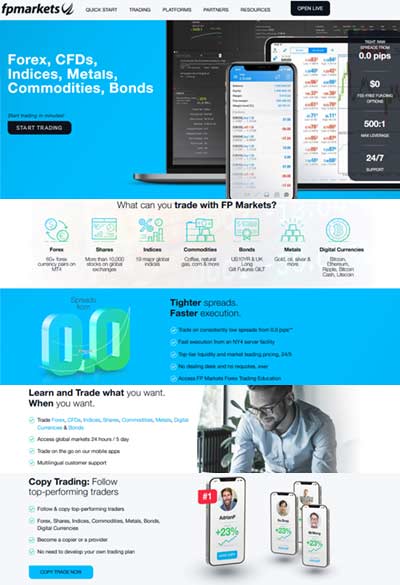
FP Markets stands out with its advanced MetaTrader platform enhancements, offering a robust environment for hedging. Competitive spreads and wide asset availability provide traders with the flexibility needed to implement effective risk management strategies.
Hedging Strategies
Brokers that allow hedging act as a form of insurance against unfavorable price movements, helping traders manage risk effectively.
Hedging comes in various forms, but the two most common are simple hedging and complex hedging. Understanding these strategies can help traders mitigate losses while maintaining exposure to potential gains.
Below, we explore both:
Example Hedging Trade on EUR/USD

Consider an example where you are trading EUR/USD, currently priced at 1.09366 USD. You decide to enter a $10,000 trade. To hedge this position, you might sell half of your trade in the market.
Why Hedge a Trade?
Hedging is a risk management strategy that helps traders reduce exposure to market volatility. By taking an opposite position, a trader can offset potential losses in the primary trade, protecting their capital.
EUR/USD Hedge Trade Outcomes
If the trade moves in your favor: If EUR/USD rises above 1.09366 USD, your long position will generate profits. However, the hedge (your short position) will incur losses. The goal is for the profits from your primary position to outweigh the hedge losses, leading to a net gain. For instance, if the price reaches 1.10000 USD, the long position gains should ideally exceed the short position losses.
If the trade moves against you: If EUR/USD drops below 1.09366 USD, your long position will suffer losses, but the hedge will gain value. This cushions your portfolio, as the profits from the hedge help counterbalance the losses in your primary trade. If the price falls to 1.08500 USD, the losses in the long position are mitigated by the hedge.
Hedging is not limited to Forex. Traders apply similar strategies in stocks, indices, commodities, and cryptocurrencies to protect against adverse price swings.
Simple Hedging
Simple hedging, also known as direct hedging, is commonly used in Forex trading. This involves opening an opposite position of the same asset to balance exposure.
How Simple Hedging Works
Suppose a trader enters a 0.5-lot long trade on EUR/USD. To hedge, the broker may simultaneously open a 0.5-lot short trade on the same pair.
If one trade moves into a loss, the opposite position limits the damage. A trader can then take profit from the winning side and adjust the stop loss on the losing side to control risk. This method ensures that losses remain manageable while allowing room for gains.

Complex Hedging
In complex hedging, traders use multiple positions and instruments to minimize risk. This approach is more sophisticated and often seen in spot Forex trading. While hedging provides protection, it does not guarantee profits, as financial markets remain unpredictable.
How Complex Hedging Works
Suppose a trader expects EUR/USD to rise and buys a call option with a strike price lower than the current market price. If EUR/USD moves up, the option gains value, allowing the trader to profit.
Conversely, if the price drops, the trader’s loss is limited to the option premium. This minimizes downside risk while maintaining upside potential.
For example, if a trader purchases a EUR/USD call option with a strike price below the market price and the pair appreciates, they can profit from the increase. If EUR/USD declines, their maximum loss is the premium paid for the option.
Additional Hedging Strategies
Beyond simple buying and selling, traders can hedge using options, futures contracts, and other derivatives. These instruments provide more flexible risk management solutions tailored to different market conditions.
By combining multiple hedging strategies, traders can effectively reduce risk exposure while keeping potential profits intact.
Choosing the Right Broker for Hedging
Selecting the best broker that allows hedging is crucial to aligning with your investment strategy. Not all brokers support hedging, and even among those that do, the conditions, fees, and trading instruments available can vary significantly. Below are key factors to consider when choosing a broker for hedging.
Hedging Regulation

The first and most important factor is whether your broker is properly regulated. A regulated broker offers better security for your funds and ensures fair trading conditions.
Check your broker’s certifications on the official websites of major regulatory authorities. Some of the top-tier regulators include:
- The Financial Conduct Authority (FCA) in the UK: https://www.fca.org.uk/
- The Federal Financial Supervisory Authority (BaFin) in Germany: https://www.bafin.de/EN/Homepage/homepage_node.html
- The Australian Securities and Investments Commission (ASIC): https://asic.gov.au/
- The Commodity Futures Trading Commission (CFTC) in the US (Note: Hedging is restricted for retail Forex traders under US regulations): https://www.cftc.gov/
- The Cyprus Securities and Exchange Commission (CySEC) in the EU: https://www.cysec.gov.cy/en-gb/home/
Not all regulators explicitly permit hedging. For example, in the United States, brokers operating under the FIFO (First In, First Out) rule cannot offer direct hedging in Forex. In contrast, European and offshore brokers often allow full hedging capabilities.
Ensuring your broker is well-regulated provides an extra layer of protection, although hedging remains inherently risky.

Hedging Style
Brokers offer different hedging strategies, and the right one depends on your trading style and risk tolerance. Some brokers may only allow simple hedging, while others support more complex strategies like options hedging or futures contracts.
Here are some hedging methods to consider:
- Simple Hedging: Involves taking an opposite position in the same asset (e.g., buying and selling EUR/USD simultaneously). - Cross-Asset Hedging: Uses related assets to hedge risk (e.g., hedging a EUR/USD trade with a USD/CHF position). - Options Hedging: Uses call and put options to limit downside risk while maintaining upside potential. - Futures Hedging: Uses futures contracts to hedge against unfavorable price movements in Forex, commodities, or stocks.
Some brokers provide advanced tools for automated hedging, allowing traders to program risk-management strategies without manually opening offsetting positions.
Account Capital
Hedging is not limited to traders with large accounts, but having more capital enhances flexibility. Larger accounts can better absorb risk and maintain multiple hedged positions without excessive margin pressure.
However, hedging can also be tailored for small accounts if used strategically. Traders should be aware of how margin requirements affect their ability to hold multiple positions, especially if the broker applies increased margin rates for hedged trades.
Understanding your risk tolerance and financial capability is crucial before using hedging strategies.
My Costs of Hedging
I’ve learned that hedging isn’t free—it comes with significant costs, such as:
- Transaction Costs: Every time I place a trade, I incur spreads, commissions, or both. - Increased Margin Requirements: Some brokers require extra margin for my hedged positions, which limits my available capital. - Swap Fees: When I hold hedged positions overnight, I may have to pay swap (rollover) fees, especially if there are interest rate differentials. - Slippage and Execution Risk: In volatile markets, execution delays or slippage can impact the effectiveness of my hedge.
I always weigh these costs against the potential benefits of hedging. A well-structured hedge should protect me from large losses without eating away my overall profitability due to excessive fees.
By carefully choosing a broker that fits my regulatory, strategic, and financial needs, I can use hedging effectively to manage risk while maximizing my trading opportunities.
Pros and Cons of Hedging

Hedging is a valuable risk management strategy that can help traders minimize potential losses, particularly in highly volatile markets. By strategically opening offsetting positions, traders can reduce their exposure to adverse price movements, ensuring greater stability in their portfolios. This approach is especially beneficial during periods of uncertainty, such as economic downturns, geopolitical tensions, or major financial news releases. While hedging does not generate direct profits, it serves as an effective way to safeguard capital and provide traders with a level of protection against unpredictable market fluctuations.
One of the main advantages of hedging is risk reduction. By implementing a hedging strategy, traders can limit the financial damage caused by sudden price movements, which can be particularly useful in fast-moving markets like Forex or commodities. Hedging also allows for capital preservation, enabling traders to remain in the market longer without suffering devastating losses. Additionally, this strategy provides flexibility, as traders can adjust their hedging positions based on market conditions, investment goals, and personal risk tolerance.
Despite its advantages, hedging comes with several drawbacks that traders should carefully consider. Hedging is not a guaranteed safeguard, and while it can minimize losses, it can also reduce potential profits. Since a hedge involves taking an opposite position, gains from the primary trade may be offset by losses from the hedge. Moreover, hedging can be costly, as it often requires additional margin, incurs transaction fees, and may result in slippage, particularly in fast-moving markets. Traders must also account for the complexity of hedging strategies, as improper execution can lead to unintended financial consequences.
It is crucial to understand that hedging does not build wealth but rather serves as a protective mechanism against significant losses. While it can be a valuable tool in a trader's arsenal, it should be used with caution and only by those who fully understand its risks and costs. Inexperienced traders may find it challenging to execute effective hedging strategies, and without proper knowledge, hedging can do more harm than good. For those who choose to hedge, thorough research and a clear risk management plan are essential to ensure that the strategy aligns with their overall trading objectives.
Hedging Brokers Verdict

Hedging has been my go‑to strategy whenever markets turn unpredictable. I remember when oil prices plunged 15% overnight—I opened a short futures position with my broker to offset the drop in my long equity exposure. Hedging isn’t about making huge gains; it’s about preserving capital and keeping my emotions in check when volatility spikes.
Picking a broker that truly supports hedging is non‑negotiable for me. My preferred futures broker, Interactive Brokers, lets me hold offsetting positions in the same account without extra “one sided” margin charges. If you’re trading with IC Markets or RoboForex, make sure they allow direct hedging in Forex, commodities, and indices—and that they don’t slap on hidden fees when you open opposite trades.
Learning different hedging tools was a game changer. For a long silver position, I once bought a mini‑silver futures contract to cap my downside. With a broker like XTB, you can also use options spreads or futures spreads—adding layers of protection as your experience grows.
Beware of the cost side of hedging. I discovered too late that extra spreads, data fees, and higher margin requirements on hedged positions can slowly erode your returns. That’s why I always compare commission schedules and minimum margin levels across brokers before placing a hedging trade.
Hedging isn’t for every trader. When I first tried it on a live account, the complexity and cost nearly overwhelmed me. I only stuck with it after practicing on a demo with a broker that offered free simulated hedging and clear margin breakout calculators—now I recommend doing the same.
Hedging remains a powerful tool in my trading toolbox. While it caps upside—like when my short crude hedge limited gains during a sudden rally—it has saved me from bigger losses more than once. With a broker that offers transparent hedging rules, fast execution, and competitive spreads, it’s a vital way to stabilize performance in choppy markets.
We have conducted extensive research and analysis on over multiple data points on Forex Brokers that Allow Hedging to present you with a comprehensive guide that can help you find the most suitable Forex Brokers that Allow Hedging. Below we shortlist what we think are the best hedging brokers after careful consideration and evaluation. We hope this list will assist you in making an informed decision when researching Forex Brokers that Allow Hedging.
Reputable Hedging Brokers Checklist
Selecting a reliable and reputable online Hedging trading brokerage involves assessing their track record, regulatory status, customer support, processing times, international presence, and language capabilities. Considering these factors, you can make an informed decision and trade Hedging more confidently.
Selecting the right online Hedging trading brokerage requires careful consideration of several critical factors. Here are some essential points to keep in mind:
- Ensure your chosen Hedging broker has a solid track record of at least two years in the industry.
- Verify that the Hedging broker has a customer support team of at least 15 members responsive to queries and concerns.
- Check if the Hedging broker operates under the regulatory framework of a jurisdiction that can hold it accountable for any misconduct or resolve disputes fairly and impartially.
- Ensure that the Hedging broker can process deposits and withdrawals within two to three days, which is crucial when you need to access your funds quickly.
- Look for Hedging brokers with an international presence in multiple countries, offering its clients local seminars and training programs.
- Ensure the Hedging broker can hire staff from diverse locations worldwide who can communicate fluently in your local language.
Our team have listed brokers that match your criteria for you below. All brokerage data has been summarised into a comparison table. Scroll down.
Compare Key Features of Hedging Brokers in Our Brokerage Comparison Table
When choosing a broker for hedging trading, it's essential to compare the different options available to you. Our hedging brokerage comparison table below allows you to compare several important features side by side, making it easier to make an informed choice.
- Minimum deposit requirement for opening an account with each hedging broker.
- The funding methods available for hedging with each broker.
- The types of instruments you can trade with each hedging broker, such as forex, stocks, commodities, and indices.
- The trading platforms each hedging broker provides, including their features, ease of use, and compatibility with your devices.
- The spread type (if applicable) for each hedging broker affects the cost of trading.
- The level of customer support each hedging broker offers, including their availability, responsiveness, and quality of service.
- Whether each hedging broker offers Micro, Standard, VIP, or Islamic accounts to suit your trading style and preferences.
By comparing these essential features, you can choose a hedging broker that best suits your needs and preferences for hedging. Our hedging broker comparison table simplifies the process, allowing you to make a more informed decision.
Top 15 Hedging Brokers of 2026 compared
Here are the top Hedging Brokers.
Compare hedging brokers for min deposits, funding, used by, benefits, account types, platforms, and support levels. When searching for a hedging broker, it's crucial to compare several factors to choose the right one for your hedging needs. Our comparison tool allows you to compare the essential features side by side.
All brokers below are hedging brokers. Learn more about what they offer below.
You can scroll left and right on the comparison table below to see more hedging brokers that accept hedging clients.
| Broker |
IC Markets

|
Roboforex

|
XTB

|
XM

|
Pepperstone

|
AvaTrade

|
FP Markets

|
EasyMarkets

|
SpreadEx

|
FXPro

|
Admiral

|
|---|---|---|---|---|---|---|---|---|---|---|---|
| Rating | |||||||||||
| Regulation | International Capital Markets Pty Ltd (Australia) (ASIC) Australian Securities & Investments Commission Licence No. 335692, Seychelles Financial Services Authority (FSA) (SD018), IC Markets (EU) Ltd (CySEC) Cyprus Securities and Exchange Commission with License No. 362/18, Capital Markets Authority(CMA) Kenya IC Markets (KE) Ltd, Securities Commission of The Bahamas (SCB) IC Markets (Bahamas) Ltd | RoboForex Ltd is authorised and regulated by the Financial Services Commission (FSC) of Belize under licence No. 000138/32, under the Securities Industry Act 2021, RoboForex Ltd is an (A category) member of The Financial Commission, also RoboForex Ltd is a participant of the Financial Commission Compensation Fund | FCA (Financial Conduct Authority reference 522157) XTB Limited, CySEC (Cyprus Securities and Exchange Commission reference 169/12), DFSA (Dubai Financial Services Authority XTB MENA Limited licensed 8 July 2021), FSA (Financial Services Authority Seychelles license number SD148), FSCA (Financial Sector Conduct Authority XTB Africa (Pty) Ltd licensed 10 August 2021), KNF (Komisja Nadzoru Finansowego Polish Financial Supervision Authority) | Financial Sector Conduct Authority (FSCA) (49976) XM ZA (Pty) Ltd, Financial Services Commission (FSC) (000261/27) XM Global Limited, Cyprus Securities and Exchange Commission (CySEC) (license 120/10) Trading Point of Financial Instruments Ltd, Australian Securities and Investments Commission (ASIC) (number 443670) Trading Point of Financial Instruments Pty Ltd | Financial Conduct Authority (FCA), Australian Securities and Investments Commission (ASIC), Cyprus Securities and Exchange Commission (CySEC), Federal Financial Supervisory Authority (BaFin), Dubai Financial Services Authority (DFSA), Capital Markets Authority of Kenya (CMA), Pepperstone Markets Limited is incorporated in The Bahamas (number 177174 B), Licensed by the Securities Commission of The Bahamas (SCB) number SIA-F217 | Australian Securities and Investments Commission (ASIC) Ava Capital Markets Australia Pty Ltd (406684), South African Financial Sector Conduct Authority (FSCA) Ava Capital Markets Pty Ltd (45984), Financial Services Agency (Japan FSA) Ava Trade Japan K.K. (1662), Financial Futures Association of Japan (FFAJ) Ava Trade Japan K.K. (1574), Abu Dhabi Global Markets (ADGM) / Financial Regulatory Services Authority (FRSA) Ava Trade Middle East Ltd (190018), Central Bank of Ireland (C53877) AVA Trade EU Ltd, Polish Financial Supervision Authority (KNF) AVA Trade EU Ltd (branch authorisation), British Virgin Islands Financial Services Commission (BVI) Ava Trade Markets Ltd (SIBA/L/13/1049), Israel Securities Authority (ISA) ATrade Ltd (514666577) | CySEC (Cyprus Securities and Exchange Commission) (371/18), ASIC AFS (Australian Securities and Investments Commission) (286354), FSP (Financial Sector Conduct Authority in South Africa) (50926), Financial Services Authority Seychelles (FSA) (SD 130) | Easy Forex Trading Ltd is regulated by CySEC (License Number 079/07). Easy Forex Trading Ltd is the only entity that onboards EU clients, easyMarkets Pty Ltd is regulated by ASIC (AFS License No. 246566), EF Worldwide Ltd in Seychelles is regulated by FSA (License Number SD056), EF Worldwide Ltd in the British Virgin Islands is regulated by FSC (License Number SIBA/L/20/1135) | FCA (Financial Conduct Authority) (190941), Gambling Commission (Great Britain) (8835), licence in Ireland as remote bookmaker for fixed odds betting licence number 1016176 | FCA (Financial Conduct Authority) (509956), CySEC (Cyprus Securities and Exchange Commission) (078/07), FSCA (Financial Sector Conduct Authority) (45052), SCB (Securities Commission of The Bahamas) (SIA-F184), FSA (Financial Services Authority of Seychelles) (SD120) | Financial Conduct Authority (FCA) (Licence No. 595450), Cyprus Securities and Exchange Commission (CySEC) (Licence No. 201/13), Financial Services Authority of Seychelles (FSA) (Licence No. SD073), Estonian Financial Supervision Authority (EFSA) (Licence No. 4.1-1/46) |
| Min Deposit | 200 | 10 | No minimum deposit | 5 | No minimum deposit | 100 | 100 | 25 | No minimum deposit | 100 | 100 |
| Funding |
|
|
|
|
|
|
|
|
|
|
|
| Used By | 200,000+ | 730,000+ | 2,000,000+ | 15,000,000+ | 750,000+ | 400,000+ | 200,000+ | 250,000+ | 60,000+ | 11,200,000+ | 30,000+ |
| Benefits |
|
|
|
|
|
|
|
|
|
|
|
| Accounts |
|
|
|
|
|
|
|
|
|
|
|
| Platforms | MT5, MT4, MetaTrader WebTrader, Mobile Apps, iOS (App Store), Android (Google Play), MetaTrader iPhone/iPad, MetaTrader Android Google Play, MetaTrader Mac, cTrader, cTrader Web, cTrader iPhone/iPad, cTrader iMac, cTrader Android Google Play, cTrader Automate, cTrader Copy Trading, TradingView, Virtual Private Server, Trading Servers, MT4 Advanced Trading Tools, IC Insights, Trading Central | MT4, MT5, R Mobile Trader, R StocksTrader, WebTrader, Mobile Apps, iOS (App Store), Android (Google Play), Windows | MT4, Mirror Trader, Web Trader, Tablet, Mobile Apps, iOS (App Store), Android (Google Play) | MT5, MT5 WebTrader, XM Apple App for iPhone, XM App for Android Google Play, Tablet: MT5 for iPad, MT5 for Android Google Play, XM App for iPad, XM App for iOS (App Store), Android (Google Play), Mobile Apps | MT4, MT5, cTrader,WebTrader, TradingView, Windows, Mobile Apps, iOS (App Store), Android (Google Play) | MT4, MT5, Web Trading, AvaTrade App, AvaOptions, Mac Trading, AvaSocial, Mobile Apps, iOS (App Store), Android (Google Play) | MT4, MT5, TradingView, cTrader, WebTrader, Mobile Trader, Mobile Apps, iOS (App Store), Android (Google Play) | easyMarkets App, Mobile Apps, iOS (App Store), Android (Google Play), Web Platform, TradingView, MT4, MT5 | Web, Mobile Apps, iOS (App Store), Android (Google Play), iPad App, iPhone App, TradingView | MT4, MT5, cTrader, FxPro WebTrader, FxPro Mobile Apps, iOS (App Store), Android (Google Play) | MT5, MT4, MetaTrader WebTrader, Admirals Mobile Apps, iOS (App Store), Android (Google Play), Admirals Platform, StereoTrader |
| Support |
|
|
|
|
|
|
|
|
|
|
|
| Learn More |
Sign
Up with icmarkets |
Sign
Up with roboforex |
Sign
Up with xtb |
Sign
Up with xm |
Sign
Up with pepperstone |
Sign
Up with avatrade |
Sign
Up with fpmarkets |
Sign
Up with easymarkets |
Sign
Up with spreadex |
Sign
Up with fxpro |
Sign
Up with admiralmarkets |
| Risk Warning | Losses can exceed deposits | Losses can exceed deposits | 69% - 80% of retail investor accounts lose money when trading CFDs with this provider. You should consider whether you understand how CFDs work and whether you can afford to take the high risk of losing your money. | CFDs are complex instruments and come with a high risk of losing money rapidly due to leverage. 75.99% of retail investor accounts lose money when trading CFDs with this provider. You should consider whether you understand how CFDs work and whether you can afford to take the high risk of losing your money. | 72-95 % of retail investor accounts lose money when trading CFDs | 57% of retail investor accounts lose money when trading CFDs with this provider | Losses can exceed deposits | Your capital is at risk | 62% of retail CFD accounts lose money | 74% of retail investor accounts lose money when trading CFDs and Spread Betting with this provider | Losses can exceed deposits |
| Demo |
IC Markets Demo |
Roboforex Demo |
XTB Demo |
XM Demo |
Pepperstone Demo |
AvaTrade Demo |
FP Markets Demo |
easyMarkets Demo |
SpreadEx Demo |
FxPro Demo |
Admiral Markets Demo |
| Excluded Countries | US, IR, CA, NZ, JP | AU, BE, BQ, BR, CA, CW, CZ, DE, ES, EE, EU, FM, FR, FI, GW, ID, IR, JP, LR, MP, NL, PF, PL, RU, SE, SJ, SS, SL, SI, TL, TR, DO, US, IT, AT, PT, BG, HR, CY, DK, FL, GR, IE, LV, LT, MT, RO, SK, CH | US, IN, PK, BD, NG , ID, BE, AU | US, CA, IL, IR | AF, AS, AQ, AM, AZ, BY, BE, BZ, BT, BA, BI, CM, CA, CF, TD, CG, CI, ER, GF, PF, GP, GU, GN, GW, GY, HT, VA, IR, IQ, JP, KZ, LB, LR, LY, ML, MQ, YT, MZ, MM, NZ, NI, KP, PS, PR, RE, KN, LC, VC, WS, SO, GS, KR, SS, SD, SR, SY, TJ, TN, TM, TC, US, VU, VG, EH, ES, YE, ZW, ET | BE, BR, KP, NZ, TR, US, CA, SG | US, JP, NZ | US, IL, BC, MB, QC, ON, AF, BY, BI, KH, KY, TD, KM, CG, CU, CD, GQ, ER, FJ, GN, GW, HT, IR, IQ, LA, LY, MZ, MM, NI, KP, PW, PA, RU, SO, SS, SD, SY, TT, TM, VU, VE, YE | US, TR | US, CA, IR | US, CA, JP, SG, MY, JM, IR, TR |
All Hedging brokers in more detail
You can compare Hedging Brokers ratings, min deposits what the the broker offers, funding methods, platforms, spread types, customer support options, regulation and account types side by side.
We also have an indepth Top Hedging Brokers for 2026 article further below. You can see it now by clicking here
We have listed top Hedging brokers below.
Hedging Brokers List

Funding methods
Bank transfer Credit Card PaypalPlatforms
MT5, MT4, MetaTrader WebTrader, Mobile Apps, iOS (App Store), Android (Google Play), MetaTrader iPhone/iPad, MetaTrader Android Google Play, MetaTrader Mac, cTrader, cTrader Web, cTrader iPhone/iPad, cTrader iMac, cTrader Android Google Play, cTrader Automate, cTrader Copy Trading, TradingView, Virtual Private Server, Trading Servers, MT4 Advanced Trading Tools, IC Insights, Trading CentralCustomer support
Live chat Phone support Email supportAccount Types
Micro account Standard account ECN accountIslamic account VIP account

Funding methods
Bank transfer Credit Card PaypalPlatforms
MT4, MT5, R Mobile Trader, R StocksTrader, WebTrader, Mobile Apps, iOS (App Store), Android (Google Play), WindowsCustomer support
Live chat Phone support Email supportAccount Types
Micro account Standard account ECN accountIslamic account VIP account

Funding methods
Bank transfer Credit Card PaypalPlatforms
MT4, Mirror Trader, Web Trader, Tablet, Mobile Apps, iOS (App Store), Android (Google Play)Customer support
Live chat Phone support Email supportAccount Types
Micro account Standard account ECN accountIslamic account VIP account

Funding methods
Bank transfer Credit Card PaypalPlatforms
MT5, MT5 WebTrader, XM Apple App for iPhone, XM App for Android Google Play, Tablet: MT5 for iPad, MT5 for Android Google Play, XM App for iPad, XM App for iOS (App Store), Android (Google Play), Mobile AppsCustomer support
Live chat Phone support Email supportAccount Types
Micro account Standard account ECN accountIslamic account XM Swap-Free account (XM Ultra Low Account) VIP account

Funding methods
Bank transfer Credit Card PaypalPlatforms
MT4, MT5, cTrader,WebTrader, TradingView, Windows, Mobile Apps, iOS (App Store), Android (Google Play)Customer support
Live chat Phone support Email supportAccount Types
Micro account Standard account ECN accountIslamic account Pro Account VIP account

Funding methods
Bank transfer Credit Card PaypalPlatforms
MT4, MT5, Web Trading, AvaTrade App, AvaOptions, Mac Trading, AvaSocial, Mobile Apps, iOS (App Store), Android (Google Play)Customer support
Live chat Phone support Email supportAccount Types
Micro account Standard account ECN accountIslamic account VIP account

Funding methods
Bank transfer Credit Card PaypalPlatforms
MT4, MT5, TradingView, cTrader, WebTrader, Mobile Trader, Mobile Apps, iOS (App Store), Android (Google Play)Customer support
Live chat Phone support Email supportAccount Types
Micro account Standard account ECN accountIslamic account VIP account

Funding methods
Bank transfer Credit Card PaypalPlatforms
easyMarkets App, Mobile Apps, iOS (App Store), Android (Google Play), Web Platform, TradingView, MT4, MT5Customer support
Live chat Phone support Email supportAccount Types
Micro account Standard account ECN accountIslamic account VIP account

Funding methods
Bank transfer Credit Card PaypalPlatforms
Web, Mobile Apps, iOS (App Store), Android (Google Play), iPad App, iPhone App, TradingViewCustomer support
Live chat Phone support Email supportAccount Types
Micro account Standard account ECN accountIslamic account VIP account

Funding methods
Bank transfer Credit Card PaypalPlatforms
MT4, MT5, cTrader, FxPro WebTrader, FxPro Mobile Apps, iOS (App Store), Android (Google Play)Customer support
Live chat Phone support Email supportAccount Types
Micro account Standard account ECN accountIslamic account VIP account

Funding methods
Bank transfer Credit Card PaypalPlatforms
MT5, MT4, MetaTrader WebTrader, Admirals Mobile Apps, iOS (App Store), Android (Google Play), Admirals Platform, StereoTraderCustomer support
Live chat Phone support Email supportAccount Types
Micro account Standard account ECN accountIslamic account VIP account
Learn more
 Losses can exceed deposits
Losses can exceed deposits
Losses can exceed deposits